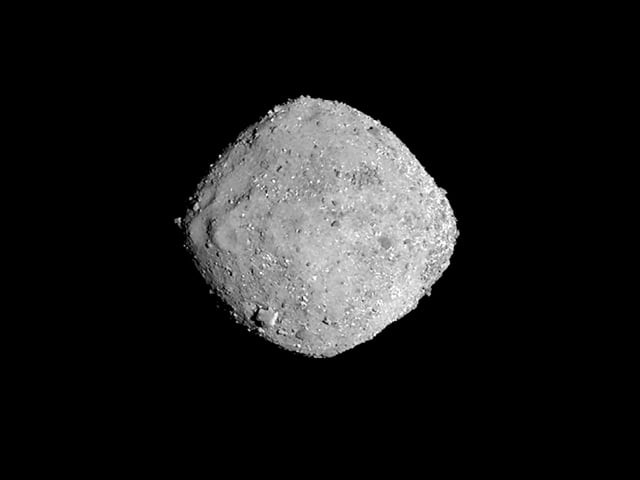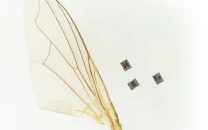'World remains vulnerable to asteroid impacts'
NASA plans to launch Double Asteroid Redirection Test mission in 2021 to protect earth from asteroids

As of today, we do not have much opportunity to protect against asteroids, an astrophysicist at the US National Aeronautics and Space Administration (NASA) told Anadolu Agency, marking International Asteroid Day on June 30.
Umut Yildiz is an astrophysicist and telecommunications engineer of Turkish origin who works on deep space telecommunications for the NASA Jet Propulsion Laboratory’s deep space missions.
“Dinosaurs are extinct today because they lacked opposable thumbs and the brainpower to build a space program,” said Yildiz, quoting Neil DeGrasse Tyson, an American astrophysicist, cosmologist and planetary scientist, on asteroid consciousness.
Asteroid consciousness has just begun to be formed in people, Yildiz said in an interview.
"[The Covid-19] pandemic taught people the time has come to become aware of global disasters such as asteroid collisions. Asteroids are also one of the global disasters," he said.
He noted that in 2005, the US Congress assigned NASA to detect 95% of the asteroids above 140 meters (around 460 feet) by 2020, adding that this year, much of the target has been reached.
Although there are minor deviations from their orbits due to their small trajectories, "asteroids are generally harmless. They have been traveling in the same place for millions of years," he said, adding the vast majority of asteroids in our solar system travel in an orbit between Mars and Jupiter.
He explained that some asteroids can deviate into different orbits where they can go in or out of the solar system.
"We are talking about a 4.5 billion-year-old solar system. Even if there were a few inches of deviation from the asteroid orbit a few million years ago, there may be a possibility of colliding with any planet by going into the solar system."
Yildiz underlined that although asteroids are generally not dangerous, the discovery of them one by one provides a resource to determine whether they pose any danger in the future.
India’s richest man launches Zoom rival
Project to protect from asteroids
NASA will launch the Double Asteroid Redirection Test (DART) mission in 2021 to protect the earth from asteroids, he said.
DART is a planetary defense-driven test of technologies for preventing an impact on Earth by a hazardous asteroid and will be the first demonstration of the kinetic impactor technique to change the motion of an asteroid in space, according to NASA.
Yildiz said a binary near-Earth asteroid named Didymos has been chosen as the target for the DART demonstration.
While the primary body of Didymos is approximately 2,559 feet across, its secondary body or “moonlet” is about 160 meters (525 feet) in size, which is more typical of the size of asteroids that could pose the most likely significant threat to Earth.
"The smallest one named Didymoon will be hit by a spacecraft to determine whether or not this asteroid lightly dislocates from its trajectory. With the weight of the DART we have, it will be checked if the asteroid is moving away or not. If it does not move away, other studies will be done accordingly."
The DART spacecraft will achieve the kinetic impact deflection by deliberately crashing itself into the moonlet at a speed of approximately 6.6 kilometers per second (roughly 15,000 miles per hour), says NASA. The collision is expected to change the speed of the moonlet in its orbit around the main body by a fraction of 1%, but this will change the orbital period of the moonlet by several minutes enough to be observed and measured using telescopes on Earth.
"This is the first project to protect from asteroids so far. Studies in terms of detection have been going on for years," he added.
"If a large asteroid hits the Earth without our knowledge, it can lead to a major disaster."
Observation of asteroids
There are stations and telescopes that track asteroids, and the information is constantly being tracked and the orbits of asteroids are being detected, he said.
He went on to say that an asteroid’s trajectory is being calculated again with observations made at certain intervals to determine whether it is continuing to move in the same orbit. Thus, it is being examined whether it deviates from its orbit.
"After an asteroid has been discovered, it cannot be said that its orbit is determined even after a 10-year observation. Because asteroids are very small, they can deviate from their orbits due to various factors, and these deviations change their orbit no matter how small," said Yildiz.
The astrophysicist highlighted that especially after big asteroids are discovered, they are being constantly monitored, adding that although the little ones do not always cause disasters, in some cases, they may have the power to destroy a city or country.
Size of an asteroid’s impact
The size of an asteroid’s impact depends on the impact angle, mass, size and composition, said Yildiz.
In terms of composition, some asteroids are iron-laden, while others may be carbon-laden, he said.
"If it is an asteroid consisting only of silicate carbon, it will have a lower effect. But if it is iron-laden, it will have a larger impact. These types of asteroids do not break down in the atmosphere and fall directly on the Earth and can have a major impact in the place they fall."
Yildiz stressed that the impact effect of an asteroid coming at right angles will be hard, while if the angle of inclination is high, the atmosphere can deflect the asteroid "just like a mirror reflects objects" and thus it will never reach the Earth.
"If it comes with a certain angle, it would stay in the atmosphere for much more time and fall to the Earth in much smaller pieces," he noted.
He said it is very difficult for amateurs who study asteroids to detect them because they are usually small and dark, adding amateurs can observe comets.
Asteroid mining
It would take years to travel to an asteroid, after which it would be necessary to conduct research to understand its contents, said the NASA expert.
Facebook, Instagram will now remind people to wear face masks
"After reaching the asteroid, the stage of infrared imaging comes to determine the ores and their depth," he said.
After returning to Earth, Yildiz said, it would be necessary to produce a new machine that would extract the ores.
This machine traveling to the asteroid will need energy, "possibly solar energy" to dig, he said, noting that to provide this energy, it would be necessary to establish a power plant and to take people for this installation.
"Today, asteroid mining is unlikely to be established."
Investing in space science
"What I noticed in people over a certain age, working at NASA, they saw [astronaut] Neil Armstrong stepping on the Moon in 1969, and they started to work here. If there was no such space culture in that day, those people would probably work in different places today," he said.
Yildiz noted that it is very important to create space consciousness and culture in every country.
"Although this culture does not show its effect immediately, it will develop with generations and affect people's lives."
In December 2016, the UN General Assembly adopted a resolution declaring June 30 as International Asteroid Day, which aims to raise public awareness about the asteroid impact hazard and to inform the public about the crisis communication actions to be taken at the global level in case of a credible near-Earth object threat, according to the UN website.



















COMMENTS
Comments are moderated and generally will be posted if they are on-topic and not abusive.
For more information, please see our Comments FAQ